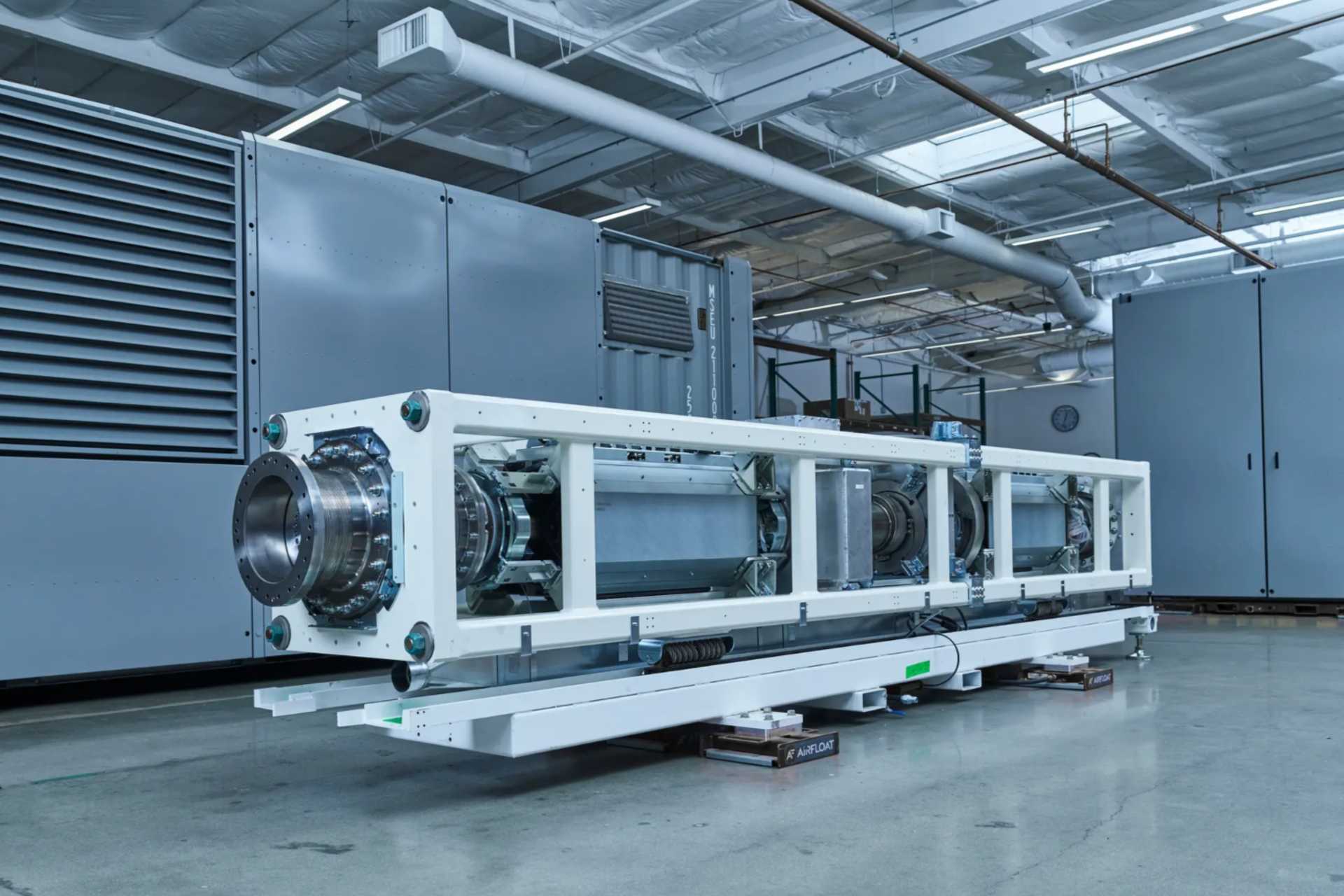
Get the latest climate technology news directly to your inbox.
Schneider tags linear generator maker to firm up microgrid offerings
Stanford offshoot Mainspring Energy’s generator is fuel-agnostic, and the duo are targeting data center customers.

Photo credit: Mainspring Energy

Photo credit: Mainspring Energy
Customers of Schneider Electric’s microgrid solutions will now have the option to add an ignition-free, fuel-agnostic generator to their systems. This comes as a result of the company’s new partnership with Mainspring Energy, which offers a linear generator capable of running on everything from green ammonia and hydrogen to biofuels and natural gas without a hardware retrofit.
- The top line: The Mainspring generator’s claim to fame is its immense flexibility — it can ramp up and down quickly, and switch between fuel types using software alone. Mainspring and Schneider say it can fill many of the gaps that grid customers like data centers and electric vehicle chargers face today, by operating behind the meter to firm up wind and solar, or enabling flexible interconnection.
- The current take: Flexible local generation, like renewables firmed up by a generator, can help reduce utility anxiety around load capacity, said Bala Vinayagam, senior vice president of microgrids at Schneider. Today, many developers — whether they’re building EV depots or data centers — have a pipeline of projects designed around flexible generation. “That can actually augment their conversations with utilities,” he said. “If there’s a local generation that comes up to make up 20% or 30% or 40%, then it becomes a much more accelerated study for the utilities as well.”
Mainspring has three customer verticals, CEO and co-founder Shannon Miller told Latitude Media. Today, the bulk of the startup’s customers are in the commercial and industrial sectors, but are looking to expand their partnerships with data center owners and utilities, with Schneider’s help.
“Data centers are sort of a unique customer set,” Miller said, “but they have a lot of the same issues as some of the EV charging infrastructure or manufacturing facilities that are growing quickly and can’t get power fast enough.”
Are growing concerns over AI’s power demand justified? Hear from Latitude Media's Stephen Lacey and industry-leading experts as they address the energy needs of hyperscale computing, driven by artificial intelligence.
.png)
Are growing concerns over AI’s power demand justified? Hear from Latitude Media's Stephen Lacey and industry-leading experts as they address the energy needs of hyperscale computing, driven by artificial intelligence.
.png)
Are growing concerns over AI’s power demand justified? Hear from Latitude Media's Stephen Lacey and industry-leading experts as they address the energy needs of hyperscale computing, driven by artificial intelligence.
.png)
Are growing concerns over AI’s power demand justified? Hear from Latitude Media's Stephen Lacey and industry-leading experts as they address the energy needs of hyperscale computing, driven by artificial intelligence.
.png)
Mainspring’s generator offers an opportunity for data center customers — who, like the company’s commercial customers, are typically adding the generator behind the meter — to solve capacity problems without waiting for additional infrastructure to be built, she added.
Not only does that speed up timelines by circumventing transmission bottlenecks, but it also brings the infrastructure closer to the load, which Miller said is something data centers really care about because of their need for resiliency.
“I think it’s actually an opportunity for data centers and utilities to work closely together to create new ways of thinking about power generation, where you’ve got shared resources,” she said. “Data centers are using it for the things they need in terms of getting power quickly and having resilience close by, and then as the grid continues to grow around them, there’s flexibility with that asset.”
She added that the linear generator’s fuel-agnosticism means that data centers and utility customers alike will have the option to transition their asset to green fuels in the future, when they’re more widely available. That means tools like peak load shaving and demand response can ultimately be accomplished with green hydrogen or biofuels, she added: “You’re both solving the capacity needs today, but also making sure you’re not locking yourself into something that won’t be sustainable in the long-term.”
Vinayagam, at Schneider, said the energy management giant expects the partnership to eventually help scale behind-the-meter infrastructure more broadly. Currently, most microgrids have a diesel or natural gas generator, and other green technologies are still in the testing stages, rather than ready to ramp up.
“So far, building green infrastructure behind the meter hasn’t been very easy, and we aren’t seeing scaled-up technologies here,” Vinayagam said. The big data center accounts Schneider works with all want to go net negative when it comes to scope one and two emissions, he added. Accomplishing that via grid interconnection is “a nightmare,” and Vinayagam said his team expects that in the very near future, more data center developments and extensions will deploy behind the meter solutions with Mainspring in order to ramp up production as quickly as possible.





